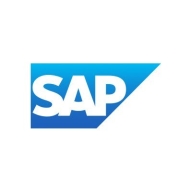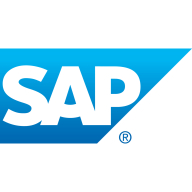

SAP PowerDesigner and LeanIX are leading competitors in enterprise architecture management. While LeanIX leads in agility and flexibility, SAP PowerDesigner excels with its detailed data modeling capabilities preferred by data management professionals.
Features: SAP PowerDesigner offers extensive data modeling tools, robust data architecture capabilities, and a customizable repository, making it a comprehensive solution for complex data systems. LeanIX, on the other hand, provides a flexible, user-friendly platform with strong application portfolio management and intuitive fact sheets favored for IT landscape management.
Room for Improvement: SAP PowerDesigner could improve its user interface simplicity and facilitate easier onboarding for new users. Its complex setup process might also benefit from simplification to enhance user experience. Integration with modern cloud services is another area for development. LeanIX might enhance support for technical users, improve user training resources, and expand features to cover more intricate enterprise architecture requirements.
Ease of Deployment and Customer Service: LeanIX is praised for its agile deployment and fast user adoption due to its cloud-centric model and accessible customer service. SAP PowerDesigner requires a more involved setup but benefits from SAP's extensive customer support and training resources.
Pricing and ROI: SAP PowerDesigner involves a higher initial cost due to its comprehensive features, delivering ROI for enterprises with complex data architecture needs. LeanIX tends to be more cost-effective with faster ROI, making it attractive for businesses prioritizing rapid deployment and flexibility.
In 24 months, after you've deployed the tool and you've got a lot of good validated data, you're probably looking at consolidating and saving your organization ongoing savings that is equatable to how much the tool would cost you on a yearly basis.
The ROI is seen more on the optimization side and the ability to map applications comprehensively rather than direct cost savings.
I cannot put a number on it, but if you think about developing software manually or using a tool to generate software and considering the license cost of SAP PowerDesigner, the ROI is pretty positive relatively quick because it's not that expensive.
The support includes engagement from Technical Advisable Management, who helps us understand and utilize new product features effectively.
Sometimes the challenges with the first level that you actually speak to, they don't understand the problem.
For support, I'll probably give them a seven.
It relies heavily on VBScript, which is something that will be end of life in a few years in Windows.
Regarding technical support, after a recent licensing issue caused a temporary halt, we realized the importance of tracking licensing and version updates to avoid future disruptions in service.
Until I get 16.7 and complete the migration, I'm not getting any help from them.
I've never seen any issues with being able to scale up or scale down the capabilities of the solution at all.
Currently, there are no scalability limitations in SAP PowerDesigner, allowing us to create numerous data models for various projects.
The scalability of SAP PowerDesigner is very good.
Our main objective is to upgrade to the supported version and be able to do whatever we are doing at the moment.
We've had issues where we've had to go back to SAP and ask for help with issues that we've had with core capabilities that were supposed to be there but weren't working.
If you use a lot of customizations, especially using VBScript, it becomes less stable.
This may lead to frequent downtimes requiring server maintenance; thus, it is not suitable for highly complex solutions, but moderate complexities can be handled.
The product is reliable.
They should implement their ticketing system natively within the application instead of relying on email.
A default framework would provide a base that organizations can quickly adopt and customize, reducing the time and effort spent on adoption.
The challenge with support was probably the response time.
SAP PowerDesigner does not have a cloud option. It's only on-premise.
I would like to see a feature added to SAP PowerDesigner where, upon extracting data from a source, it automatically identifies relationships between tables.
The web portal is unstable and does not work. It freezes up all the time.
It cost me $91,000 a year for 300 applications.
Our usage and costs depend on the number of applications, and as the number of applications grows, so does the cost.
One issue is the cost, as it is a high-priced tool coming from SAP.
It ensures cost optimization by identifying duplicate applications and stopping unnecessary application onboarding.
Being able to do the lineage all the way through so that each one of those you can pull them out into their component parts to determine exactly which areas you need to resolve, fix, plan, or build a strategy around.
When you align it or map it to your business capabilities, this is how you identify duplication of technologies in your business.
The best features of SAP PowerDesigner, from my perspective, are its ability to keep the connectivity between the source database and the new system, data redundancy and availability, and impact analysis.
SAP PowerDesigner doesn't only allow you to model the structure of your database, but you can also model data mappings or data flows or lineage.
What I appreciate best about SAP PowerDesigner is that it is a very detailed and comprehensive tool.
| Product | Market Share (%) |
|---|---|
| LeanIX | 13.1% |
| SAP PowerDesigner | 8.0% |
| Other | 78.9% |


| Company Size | Count |
|---|---|
| Small Business | 8 |
| Midsize Enterprise | 3 |
| Large Enterprise | 13 |
| Company Size | Count |
|---|---|
| Small Business | 18 |
| Midsize Enterprise | 6 |
| Large Enterprise | 18 |
SAP LeanIX provides enterprise architecture solutions that modernize IT and transform businesses, integrating AI-enriched, SaaS tools to enhance architecture visualization and evolution.
Embracing a comprehensive approach, SAP LeanIX supports organizations globally with tools that foster IT landscape optimization and forward-looking architecture creation. It offers solutions for real-time IT overviews, risk management, and architectural planning. These capabilities ensure that enterprises have the flexibility and insights needed to maximize their business impact and align their IT strategies with their organizational goals. SAP LeanIX is recognized for its ease of use, flexible reporting, and the ability to seamlessly integrate various data sources.
What features define SAP LeanIX?SAP LeanIX is implemented across industries to enhance enterprise architecture, application portfolio management, and business capability mapping. Its use extends into cloud governance, data flow analysis, and integration architecture, allowing multiple organizations to improve operational visibility and strategic planning. It also enables cataloging systems and app rationalization while linking capabilities for improved lifecycle management.
SAP PowerDesigner is a valuable solution for developing several different types of data models according to business process needs. Data models can be logical, conceptual, and physical, and can also include dimensional and relational models. PowerDesiger has the ability to integrate a designed business process model with the actual database design to ensure that all the data process steps are included in the logical model. PowerDesigner is able to use the physical model to create the actual database, and from there, design various physical iterations from a single logical model.
PowerDesigner can perform excellent reverse-engineering of existing databases to create a model diagram. The solution integrates well with many of today's most recognized database management systems (DBMS). Some of the solution’s featured outputs include custom or standard reports of every object in the design (relationships, field, and tables), design impact analysis, and entity-relationship (ER) designs.
PowerDesigner offers intuitive capabilities such as metadata management, link and sync, and data modeling. Users can instantly view architecture layers and essentials, access the robust metadata repository, and share findings with the user’s entire team.
SAP PowerDesigner Features
SAP PowerDesigner Benefits
Reviews from Real Users
“The most valuable feature of SAP PowerDesigner is the testing of the models, it has the best function. Reverse engineering is very helpful too. I use SAP PowerDesigner for data modeling and documentation. It interacts well with the other tools. Additionally, we use it for all of the business requirements, such as CDM and PDM.” - Saadat T., Emerging Cloud Solution Architect at a tech services company
“It's a great tool for documentation. A new data scientist can easily understand the data just by looking at it. Once you are managing your physical data with a logical data model, by looking at this data model, you can understand what it means, the business meaning of the elements which are maintained by the relational database.” - Michael R., DA
We monitor all Enterprise Architecture Management reviews to prevent fraudulent reviews and keep review quality high. We do not post reviews by company employees or direct competitors. We validate each review for authenticity via cross-reference with LinkedIn, and personal follow-up with the reviewer when necessary.